After the failure of the MiG 1.44 RAC MiG searched ways to use the new knowledge and technology otherwise. As Sukhoi was chosen to develop the heavy Air-Superiority Fighter PAK-FA, Mikoyan started to develop a new leightweight Multirole combat aircraft, the MiG-LMFS, which is also called "Project 1.27". Actually the MiG-LMFS is only a single engine stealth variant of the Mikoyan-Gurevich MiG 1.44. While the PAK-FA challenges the Lockheed Martin F-22 Raptor, the Mikoyan-LMFS is a direct competitor to the American F-35 Lightning II. Like on the MiG-1.44, Canards and tailless delta-wings will be used.
But at the beginning of 2011 RAC MiG published new concept designs of the LMFS, but this time, unlike on earlier designs, Diverterless Supersonic Inlets were included like they are on the F-35 Lightning II and the Chinese Chengdu J-20, and instead of Canards, conventional control surfaces are used.
RAC MiG is excepted to design the MiG-LMFS as a smaller and cheaper alternative to the heavy and expensive Sukhoi Fighters. Beacause of the MiG-23, MiG-21 and MiG-27, which are used in many countries and they must be replaced, the MiG-LMFS could be very successful on global market. The problem is that it is unknown if the Russian Air Force will want the LMFS, while it is impossible for Mikoyan to finance itself only with the MiG-29 and the MiG-35. But because the Sukhoi PAK-FA will have technical problems and will get more expensive, like the American F-22 Raptor, the LMFS, like the F-35 in the United States, could be very interesting for the Russian Air Force.
Comparable Aircraft
The performance of the LMFS is still unknown, but when looking on it´s design, it can be estimated against which aircraft it will compete and against which it will not:China
Chengdu J-10 Vigorous DragonSweden
JAS-39 GripenUnited States
F-35 Lightning II
MiG LMFS : Updates and discussion
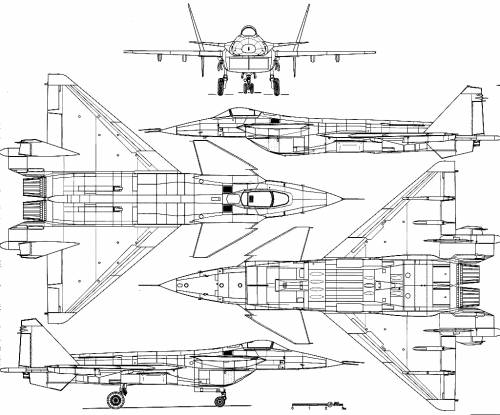
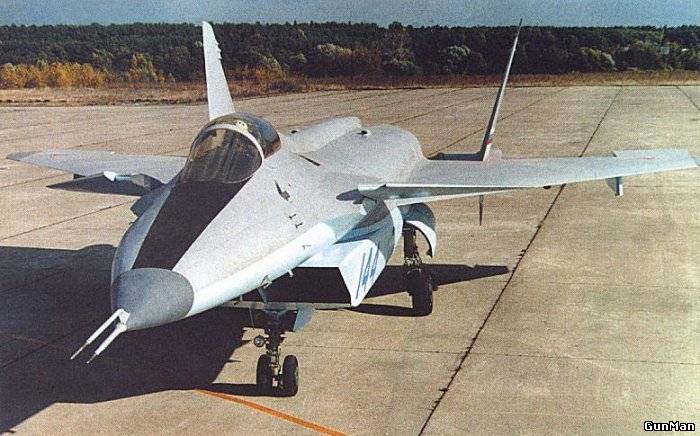




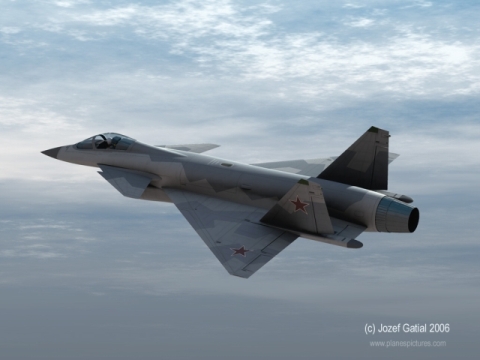



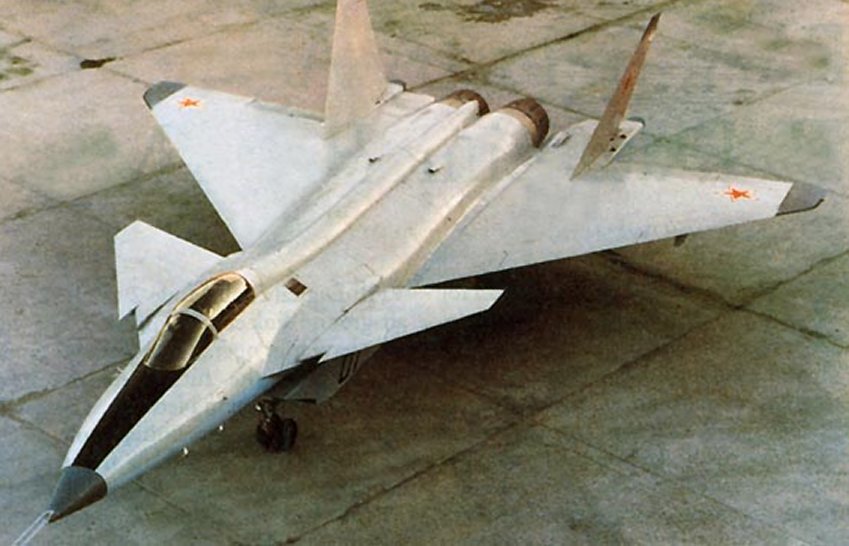
The Russian Air Force made an unexpected shift in the priorities for its future fighter, stating that the service will back the simultaneous development of two programs for a fifth-generation aircraft. The PAK FA medium-weight fighter program, which has been underway since 2002, is joined by MiG's lighter-weight aircraft project. In addition to the goal of winning domestic orders, MiG's light multi-role fighter build on the company's earlier experience with its MiG 1.44 program, also may attract India as a co-developer and future customer.
In April 2002, the Russian military chose Sukhoi's T-50 proposal in the fifth-generation fighter contest — which was codenamed the Perspektivniy Aviatsionniy Kompleks Frontovoi Aviatsii (PAK FA), or future tactical aviation air system. Since 2002, Sukhoi has been regularly meeting the subsequent milestones in the new fighter's development, which led to the Russian Air Force's approval of the T-50's preliminary design. To date, Sukhoi has developed a computer mock-up of the aircraft and an operating mockup of the cockpit. The PAK FA prototype's maiden flight is expected in 2009.
Sukhoi's victory in the Russian Air Force competition resulted not only from the T-50's design characteristics. The choice was made with the consideration of the company's sizeable profits from the sales of the Su-27 family aircraft to China and India in the 1990s and early 2000s. At that time, Sukhoi fighters represented half of Russia's aircraft production, and nearly half of Russian military technology exports. During the 1990s, Sukhoi maintained the largest workload of all Russian design bureaus. Unlike other Russian aircraft designers, the company counted more on its own resources than on government subsidies.
The Sukhoi T-50's rival in 2002 was the MiG design, the exact designation of which is classified. Later, when MiG Corp. decided to continue this program, it received the codename Liogkiy Mnogofunktsionalniy Frontovoi Samolyot (LMFS) or Light Multi-role Tactical Aircraft. MiG Corp. did not accept defeat in the contest against Sukhoi, and criticized the decision-making procedure. According to MiG, several aspects were omitted during the evaluation, like the purchase cost for the Air Force, the aircraft's lifetime maintenance costs and the export possibilities of various versions during the next few decades. MiG insisted that instead of initial projects, the choice of a winner should have been made at the phase of prototype tests.
Looking for foreign partner
About a year ago, MiG's LMFS project came out of the shadows again due to a series of fortunate events. Some time ago, the Indian Defense Research and Development Organization (DRDO) and Aeronautical Development Agency (ADA) started analyzing the development options for a home-grown fifth-generation fighter, called the Medium Combat Aircraft (MCA), which was a twin-engine version of the its Light Combat Aircraft (LCA) Tejas fighter. After a bad experience with the LCA, India sought a partner in Russia for the MCA program.
The re-birth of MiG's LMFS project also was helped by the company's improved financial situation, resulting from several contracts for new versions of the MiG-29 that were signed in recent years. India ordered 16 MiG-29K/KUB ship-based fighters with the option for 30 more, Yemen purchased or upgraded 20 MiG-29SMT/UBT fighters, and Algeria ordered 34 MiG-29SMT/UBTs. New contracts for 32 fighters for Yemen and the upgrade of 66 aircraft in India are expected to be signed in the coming months. This will provide MiG with a portfolio of orders worth $4.5 billion.
Another event favorable for the LMFS program was the September 2004 nomination of Alexey Fedorov, the president of Russia's largest privately-held jet manufacturer — the Irkut Corporation — as the top manager at MiG. Fedorov is well known in India because in his previous role as Irkut's leader, he sold the Su-30MKI combat aircraft to India and was starting its license production there. Fedorov's contacts will certainly help the promotion of MiG-35 and LMFS fighters in India. In the coming months, Fedorov is to become the head of the OAK Corporation, which is a consolidation of Russia's aircraft industry. Therefore, it is expected that the LMFS program will be high on OAK's priority list.
A joint Russian-Indian fighter was discussed for the first time in June 2001. Later, during the visit of then-Indian Defense Minister George Fernandez to Moscow in January 2003, Russia and India signed a protocol declaring the intention to jointly develop a new-generation fighter. At the Sukhoi Design Bureau, Fernandez was shown the T-50 project. The trip of Indian Defense Minister Pranab Mukherjee to Moscow in November 2005 (where he visited both MiG and Sukhoi) was crucial for the Indian-Russian contacts about the new generation fighter. The minister stated that India is not intending to be only a source of money for the project. "Our air force and industry are willing to participate in all stages of the new fighter's creation, starting with the conception, and continuing through the design and research to common production," he said. Mukherjee did not name specific companies and designs, but the phrase above distinctly refers to the MiG fighter, as Sukhoi's design is already complete and the documentation for prototype aircraft manufacture is nearly ready. Moreover, the Sukhoi aircraft is being developed in accordance with the Russian Air Force requirements and does not meet the needs of India. However, Russia is still pressing India to join the Sukhoi PAK FA program. In early August 2006, a Sukhoi delegation was again in India, and presented their project to the Ministry of Defense.
LMFS is different
A great advantage of the MiG project is the fact that its design and technical parameters are significantly different from the Sukhoi T-50. As a result, the market does not have to choose between an "either-or" situation, and both aircraft can find their place, depending upon the needs of potential export clients. The MiG proposal is for a "right-sized" aircraft that would be in the realistic price range for most foreign buyers, as best described by the frequently-quoted phrase of Mikoyan Design Bureau Director Vladimir Barkovskiy: "smaller and simpler aircraft would be inferior to its competitors, but larger and more sophisticated would be too expensive." In 2002, the then-CEO of MiG Corp. Nikolay Nikitin stated that an outlay of $1.3 billion per year between 2010-2025 would be enough to cover a Russian Air Force purchase and operation of a necessary number of MiG-designed aircraft, while a heavier Sukhoi aircraft would cost $2 billion per year. MiG also estimates the export potential of its lighter-weight fighter as 3-4.5 times higher than the Sukhoi fighter.
At the moment, one thing is certain: the LMFS will be about 30% lighter than the T-50. According to approximate assessments, the T-50 will have a normal take-off weight of 21 tons, which places it between present MiG-29 and Su-27 fighters — whereas the LMFS is likely to weigh 15 tons. Most probably, the LMFS will retain the delta canard configuration of the heavy MiG 1.44 prototype. Being asked directly about the new fighter configuration, Barkovskiy answered indirectly: "It would be illogical if we reject the experience we accumulated while developing that project [MiG 1.44]." He also mentioned that "the number of wind tunnel tests [of the 1.44 models] was vast, setting a new record in Russia. [So] we are making use of these materials and transforming them into the fifth generation aircraft."
It is not known at the moment whether the new MiG fighter will be powered by one or two engines. Originally, the company's design had two Klimov VK-10 turbofans rated at about 10.5 tons each, which are a further development of the MiG-29's RD-33 engines. In this configuration, the aircraft entered the Russian fighter contest in 2002 and was presented to India in 2005. In addition to their application on MiG's new aircraft, the VK-10 engines also could be used to extend the MiG-29's life in its new MiG-35 version. Moreover, the RD-33/VK-10's manufacturer, the Klimov Company, has become a part of MiG Corporation's engine division, and it is obviously easier for MiG to cooperate with Klimov than with other engine manufacturers.
Developing a single-engine design for MiG's fifth-generation fighter has become a more frequently discussed issue. Such an option was backed Russian Air Force Commander Gen. Mikhailov last January, while similar opinions have come from India as well. If the customers insist on a single-engine design, the use of a version of the AL-41 engine (to be installed on the T-50) with a thrust increase to about 20 tons is possible. Such a solution is cheaper, although it requires the engine to be mature at its entry into service and reach a high level of reliability first.
the Phazotron-NIIR institute will present the first Russian fighter radar with an active electronic scanning antenna (AESA): the Zhuk-MAE, which was developed for the MiG-35. Two prototypes of the radar were under assembly in the autumn of 2006. The fifth-generation LMFS fighter will certainly be fitted with a development of this radar. The cooperative links between MiG Corp. and Phazotron-NIIR were strengthened at the beginning of 2006 when a group of MiG's top managers purchased a controlling stake of Phazotron. In May 2006, Mikhail Korzhuyev became the director general of Phazotron, while Sergei Tsivilev, the MiG Corp's First Deputy CEO, was elected the chairman of Phazotron's board.
One or two fifth generation fighters?
The possibility of India's participation in the LMFS project generated new interest in this program from the Russian Air Force. Shortly after the Moscow visit of Indian Defense Minister Mukherjee last January, Russian Air Force Gen. Vladimir Mikhailov declared that "two fifth generation fighters, a medium one and a light one, are being developed" in Russia. The medium fighter will be Sukhoi's PAK FA chosen in 2002, while the light next generation fighter was described by the Russian Air Force Commander as a single engine MiG aircraft with the same engine, avionics and armament as the PAK FA.
It is understandable that Gen. Mikhailov's declaration caused anxiety at Sukhoi. A few days later, the head of Sukhoi Holding, Mikhail Pogosyan, said "there is no technology in Russia to develop a light fighter," clearly indicating that — in his opinion — only Sukhoi's PAK FA can be the fifth generation fighter. Moreover, he added that the PAK FA is not a heavy fighter, as "it is considerably smaller than the F-22A, Su-47 or MiG 1.44." According to Pogosyan, "any discussions about Russian heavy and light fifth generation fighters are pointless."












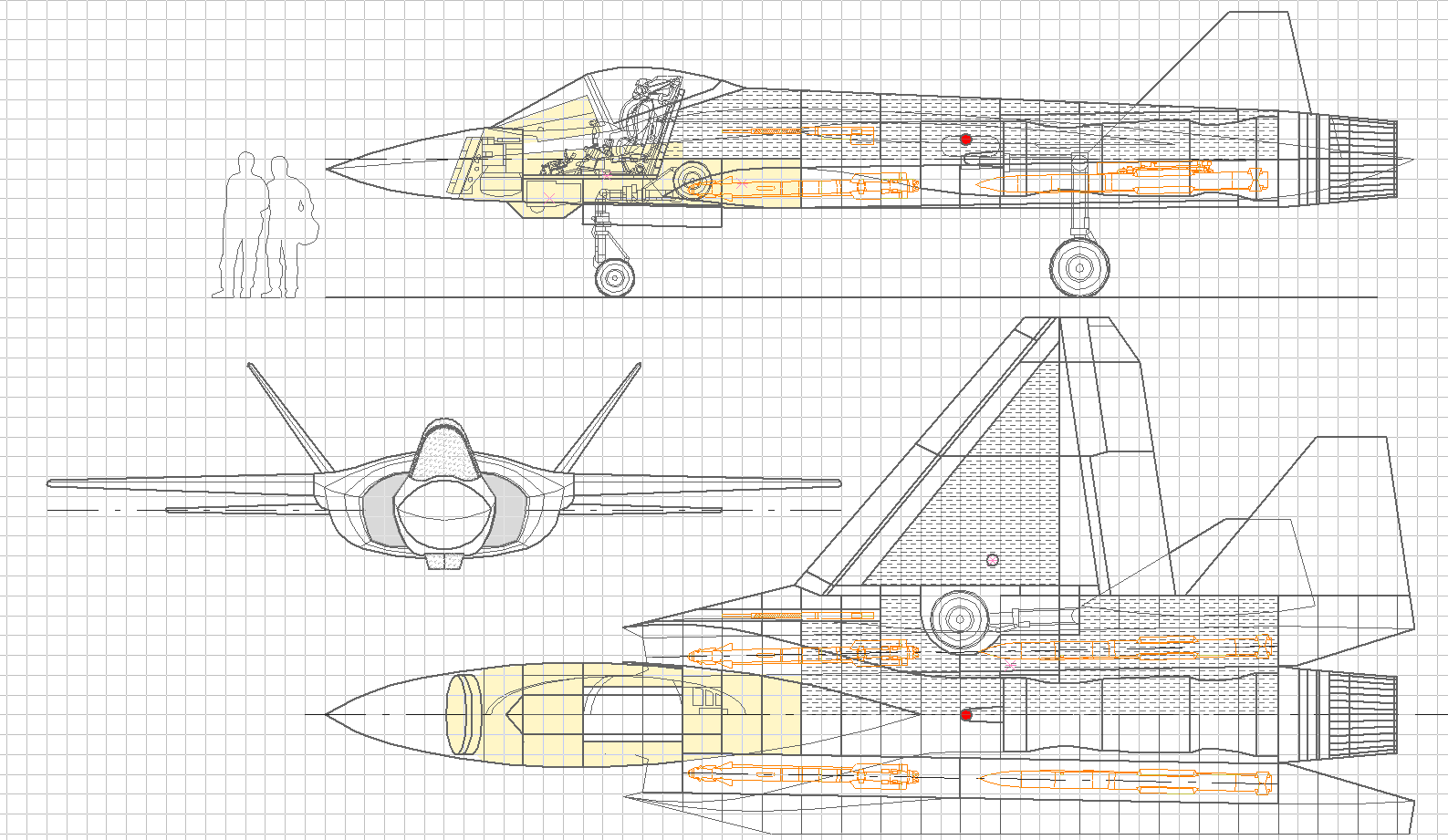




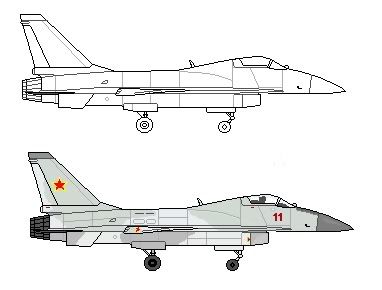



Russia Developing Yet Another Fifth Generation Fighter Jet
Turns out, the dreaded Sukhoi T-50 PAK FA is not the only fifth-generation fighter jet under development by Russia. The PAK FA is expected to enter services in 2017. But the Russian Aircraft Corporation MiG is developing yet another cutting-edge lightweight fifth generation fight jet. The new lightweight fighter jet will be based on Mikoyan Project 1.44 (NATO reporting name: Flatpack), reports Sputnik News.
Russia's new fifth generation jet to replace MiG-29
The Mikoyan Project 1.44 was meant to develop an alternative to the Advanced Tactical Fighter (ATF) project of the United States that led to the development of Lockheed Martin Corporation (NYSE:LMT) F-22 Raptor. The aircraft made its first flight in 2000. It boasted of stealth technology, advanced avionics, super-cruise, and super-maneuverability. However, Russia shut down the project over a decade ago.
Russian Air Force to get the first batch of PAK FA in 2017
However, it may take years before this lightweight jet is inducted into the Russian Air Force. Meanwhile, the first batch of Sukhoi T-50 PAK FA will join the Air Force in late 2016 or early 2017. PAK FA is a multi-role, twin-engine, single-seat, air superiority fighter with stealth capabilities. It is expected to have a service life of up to 35 years. It boasts of new avionics package that provides intelligent support and superior automatic control.According to Sputnik News, the PAK FA is outfitted with a unique digital weapon guidance system with "fire-and-forget" capabilities. This technology allows the jet to lock on a target and hit it when it is no longer in the line-of-sight. It also features an improved technology to locate and track targets.
Russia is modernizing its military under a massive $400 billion program as tensions with the West continue to escalate.
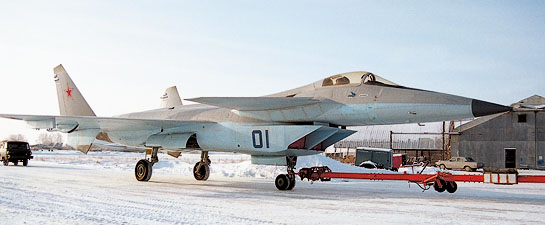
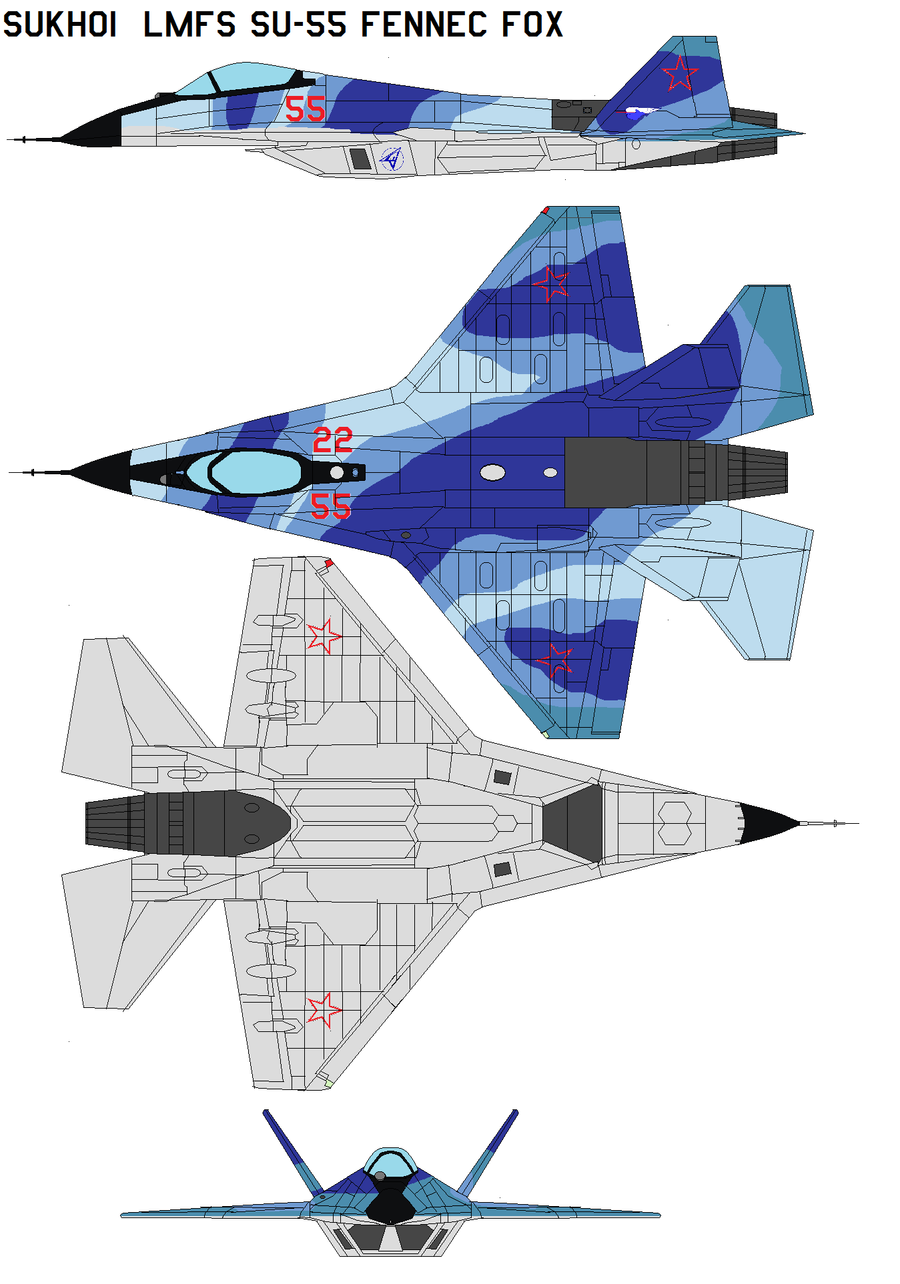
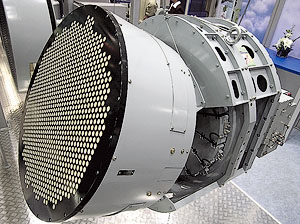

No comments:
Post a Comment